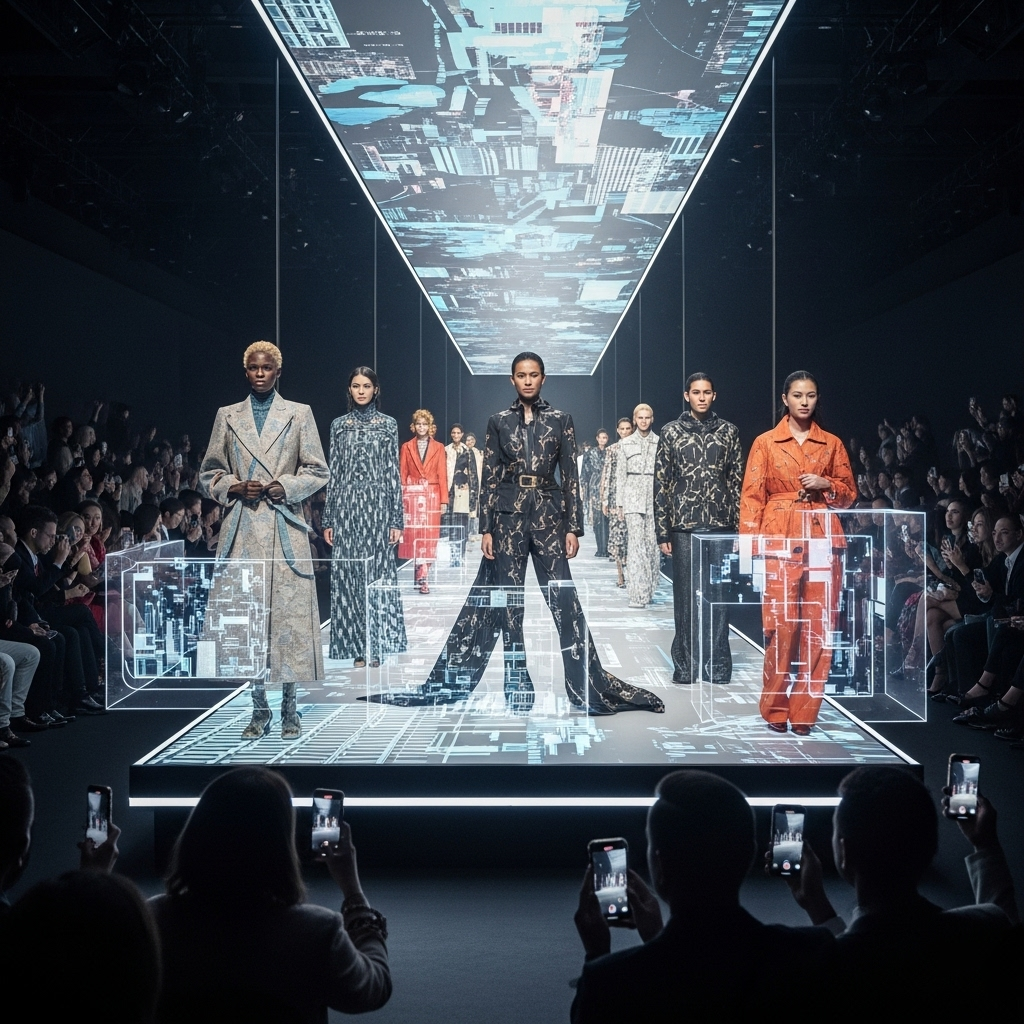Blog
The Digital Runway: Fashion’s Transformation in the Age of Social Media and E-commerce

The fashion industry, once a bastion of exclusivity and carefully curated trends, has undergone a seismic shift in the digital age. Social media platforms and the relentless expansion of e-commerce have not just influenced fashion; they have fundamentally rewired its DNA, from the genesis of a design to its final purchase. The traditional gatekeepers – editors, buyers, and high-end advertising agencies – have been dethroned, giving way to a more democratized, instantaneous, and often chaotic landscape where anyone with a smartphone can be a trendsetter or a brand’s next big customer.
Perhaps the most visible agents of change are fashion influencers. From the early days of style blogs to the meteoric rise of Instagram, TikTok, and YouTube, these digital tastemakers have redefined how trends are disseminated and consumed. No longer do fashion magazines hold sole sway over what’s “in”; now, a single post by a popular influencer can ignite a global trend overnight. Brands, recognizing this immense power, have shifted significant portions of their marketing budgets from traditional advertising to influencer collaborations, leveraging their authentic connection with followers. This democratized access means that style inspiration now flows not just from the catwalk downwards, but also from the streets and screens upwards, creating a more diverse and inclusive fashion dialogue.
This democratization extends beyond influencers to the average consumer. Social media has transformed fashion from a passive consumption experience into an interactive one. Individuals can now showcase their personal style to a global audience, gain recognition, and even build their own niche communities around shared aesthetic preferences. Platforms like Pinterest and Instagram serve as endless mood boards, allowing users to discover, save, and share inspiration effortlessly. This direct engagement has also empowered consumers to interact with brands directly, providing immediate feedback, asking questions, and feeling a greater sense of participation in the brand’s journey.
The rise of Direct-to-Consumer (DTC) brands is another profound consequence of the digital shift. Bypassing traditional brick-and-mortar retail and wholesale models, these brands leverage e-commerce to connect directly with their audience, cutting out intermediaries and often offering more competitive pricing. Websites like ASOS, Boohoo, and even smaller, independent labels have built empires purely online, demonstrating the power of a strong digital presence coupled with efficient logistics. They excel at using data to understand consumer preferences, rapidly iterate on designs, and create highly personalized shopping experiences.
E-commerce innovation continues to push boundaries, making online shopping increasingly sophisticated and engaging. Augmented Reality (AR) try-ons, for example, allow customers to virtually “wear” garments using their phone cameras before purchasing, bridging the gap between the online and physical shopping experience. Virtual showrooms and digital fashion week presentations offer immersive alternatives to physical events, reducing travel and environmental impact while expanding reach. Personalized recommendation engines, powered by AI, analyze Browse history and purchase patterns to offer highly relevant product suggestions, making the online shopping journey feel more tailored and efficient.
However, this digital acceleration also has its downsides. Social media’s emphasis on constant novelty has contributed to faster trend cycles, pushing the fast fashion industry to produce more collections at an ever-increasing pace. This “see now, buy now” mentality puts immense pressure on supply chains and exacerbates environmental concerns related to overproduction and waste. The relentless pursuit of the “perfect” Instagram aesthetic can also contribute to issues of body image and unrealistic beauty standards, as individuals strive to emulate curated digital personas.
The concept of User-Generated Content (UGC) has also become a goldmine for fashion brands. Encouraging customers to share photos and videos featuring their products creates authentic social proof and builds a strong sense of community around a brand. Hashtag campaigns, challenges, and online styling contests leverage the creativity of consumers, turning them into unwitting brand ambassadors. This organic marketing often resonates more deeply with audiences than traditional advertisements.
Looking ahead, the metaverse and digital fashion represent the next frontier. Brands are already investing in virtual clothing and accessories that can be “worn” by avatars in digital worlds or even as NFTs (Non-Fungible Tokens). This blurs the lines between physical and digital ownership, opening up entirely new revenue streams and creative possibilities. While still nascent, the potential for virtual fashion shows, immersive brand experiences, and digital-only collections points to a future where our online identities are as carefully styled as our offline ones.
In conclusion, the digital revolution has irrevocably transformed the fashion landscape. Social media and e-commerce have created a more accessible, interactive, and fast-paced industry, empowering consumers and challenging traditional power structures. While this shift brings forth new ethical considerations and environmental challenges, it also unlocks unprecedented opportunities for creativity, connection, and global reach. The digital runway is not just a passing trend; it is the new normal, continually evolving and reshaping how we design, market, buy, and experience fashion.
